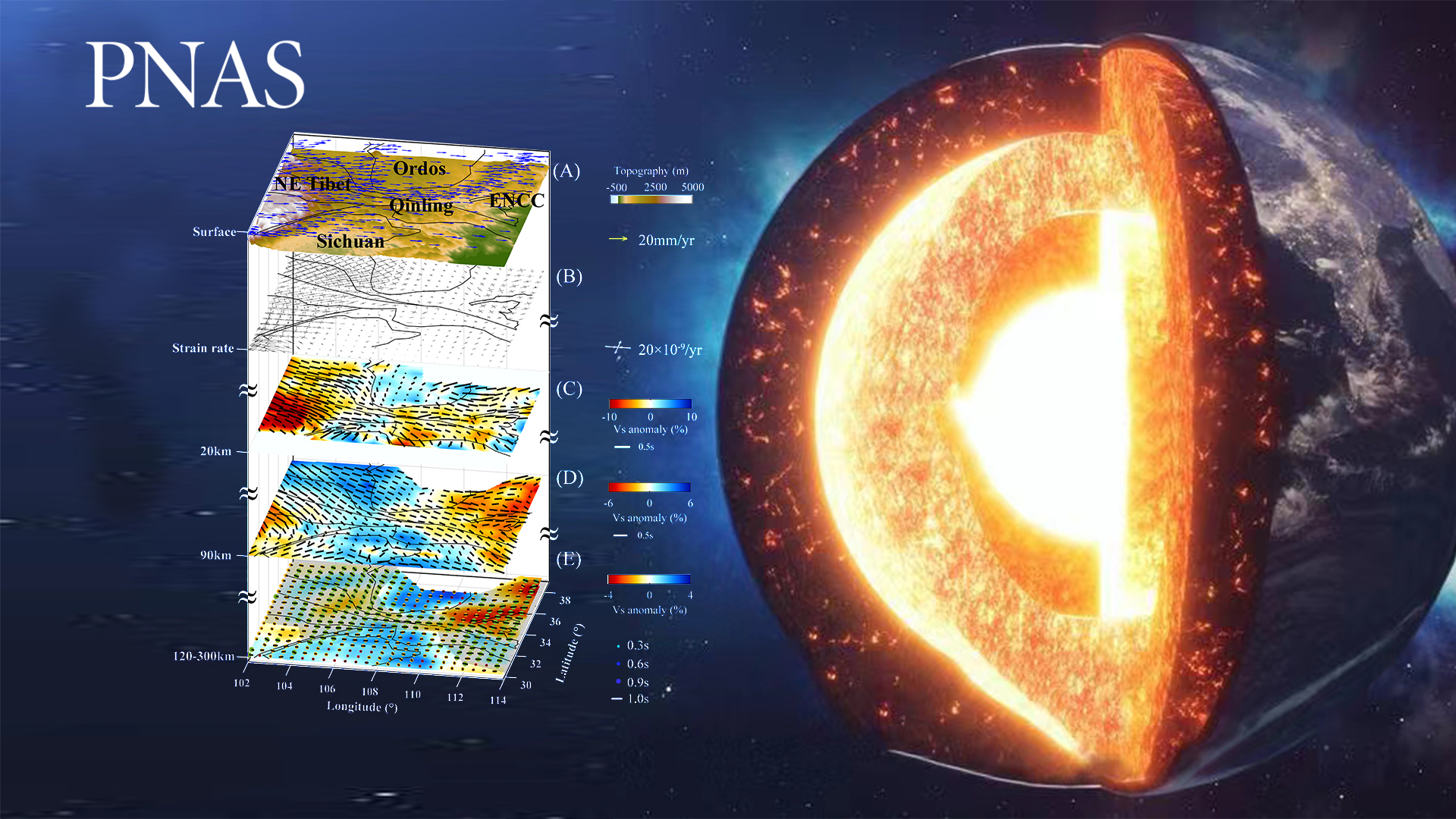During the last 50 million years, the East Asian continent has been a zone of massive continental collision and lithospheric deformation. While the consequences of this for Asian surface and lithospheric deformation have been intensively studied during the past four decades, the relationships between lithospheric deformation and underlying asthenospheric flow have been more difficult to constrain.

Assistant Prof. Zhen Guo’s team from the Department of Ocean Science and Engineering at the Southern University of Science and Technology (SUSTech) recently used a seismic approach that separately isolates and maps the seismic anisotropy in the crust, mantle lithosphere, and underlying asthenosphere to construct a high-resolution 3-D azimuthal anisotropy model for the northeastern Tibetan Plateau and its eastward continuation.
Their research results, entitled “Seismic constraints and geodynamic implications of differential lithosphere-asthenosphere flow revealed in East Asia,” were published in the prestigious journal Proceedings of the National Academy of Sciences of the United States of America (PNAS).
The results from Prof. Guo’s team clearly depict that the eastward extrusion of the asthenosphere from beneath the northeastern Tibetan Plateau is being blocked by thick Ordos and Sichuan cratonic keels. This induces it to first rotate around the Ordos keel and then transition into strong east-west flow beneath the thinner lithosphere, forming the suture between the two cratonic keels. They further found that asthenosphere flow directions can differ from those of overlying lithosphere, with the asthenosphere neither being passively dragged by overlying lithosphere, nor being able to drag the overlying plate to mimic its subsurface flow.
The consequence is that the asthenosphere first migrates around the Ordos keel and then turns into a strong east-west flow within the narrow channel of the thinner lithosphere that exists between the Ordos and Sichuan. A broad region of surface continental deformation in eastern China is influenced by this asthenospheric flow from Tibet.
These findings provide useful observational constraints to test future geodynamic models of deformation within East Asia, both in their predictions for the pattern of lateral flow, and for the time-history of the melting that would arise from upwards sloping lateral flow of asthenosphere during its lateral migration beneath East Asia. Finally, this work demonstrates that a relatively dense network of seismic stations, in combination with proper measurements of regional surface movements, will not only help determine surficial ‘plate tectonics’ motion, but also the horizontal flow directions of underlying asthenosphere.
When researchers can extend this approach to cover more of the Earth’s surface — in particular beneath oceanic as well as continental regions — then they will have fully realized this powerful observational tool to better understand the origins of intraplate melting and the potential coupling between plate tectonics, underlying mantle flow, and melting.
Dr. Shanshan Wu, a visiting student at SUSTech, is the first author of this paper. Asst. Prof. Zhen Guo from SUSTech is the corresponding author. The co-authors include Prof. Yongshun John Chen and Prof. Jason P. Morgan from SUSTech. The Department of Ocean Science and Engineering at SUSTech is the first affiliation of this paper.
This work was supported by the National Natural Science Foundation of China (NSFC).
Paper link: https://www.pnas.org/doi/10.1073/pnas.2203155119
To read all stories about SUSTech science, subscribe to the monthly SUSTech Newsletter.
Proofread ByAdrian Cremin, Yingying XIA
Photo By